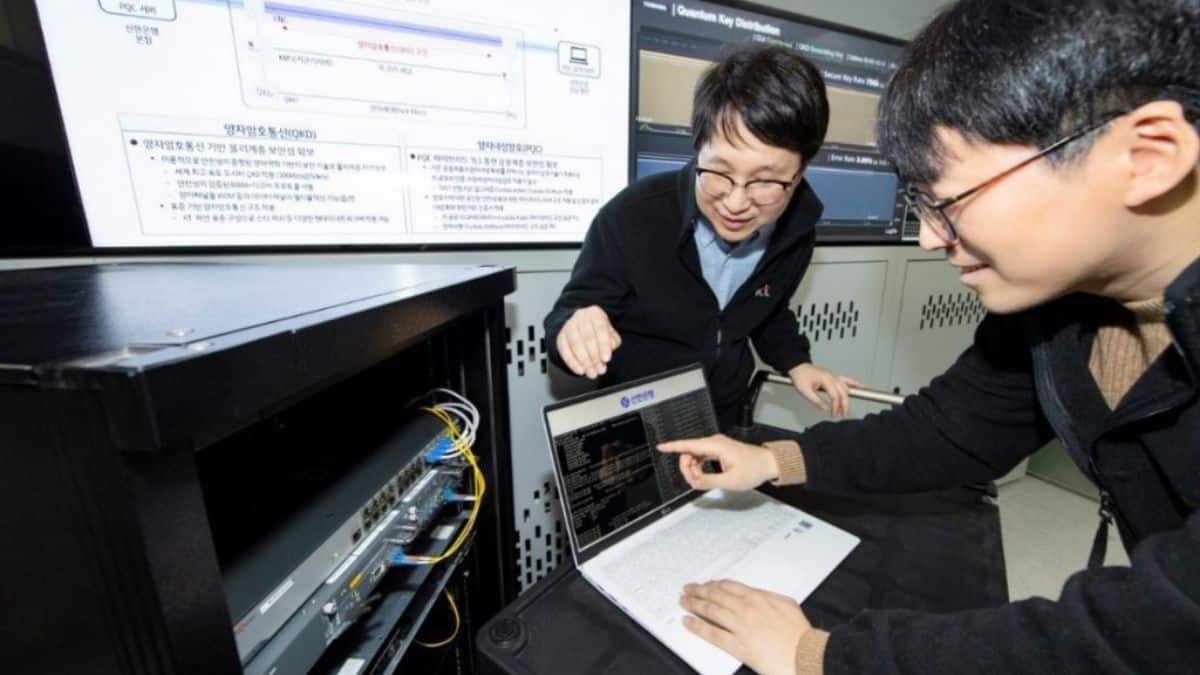 Image Credits - Asia.toshiba
Image Credits - Asia.toshiba
Toshiba Digital Solutions, in collaboration with KT and Shinhan Bank, has successfully demonstrated the capabilities of hybrid quantum secure communications technology. This technology combines quantum key distribution (QKD) and post-quantum cryptography (PQC) to provide robust security for financial networks against potential cyberattacks by quantum computers. Hybrid quantum secure communications technology combines quantum key distribution (QKD) and post-quantum cryptography (PQC) to enhance the security of financial networks against potential cyber threats posed by quantum computers. This technology was demonstrated by Toshiba Digital Solutions, KT, and Shinhan Bank, showcasing how it can protect banks and financial networks from cyberattacks by utilizing a hybrid approach that integrates QKD and PQC to ensure end-to-end security.
The benefits of using hybrid quantum secure communications technology include enhanced security for financial networks against potential cyber threats posed by quantum computers. This technology combines quantum key distribution (QKD) and post-quantum cryptography (PQC) to provide robust protection for communications links, ensuring end-to-end security without the need for intermediate nodes.
By utilizing QKD to protect physical layers and PQC for internet security protocols, hybrid quantum secure communications offer complete protection for application services like homepage login, making it a crucial advancement in safeguarding sensitive financial data from cyberattacks.
Hybrid quantum secure communications technology, as demonstrated by Toshiba Digital Solutions, KT, and Shinhan Bank, offers enhanced security compared to traditional encryption methods. This hybrid approach combines quantum key distribution (QKD) and post-quantum cryptography (PQC) to provide robust protection for financial networks against potential cyber threats posed by quantum computers.
QKD ensures end-to-end security by eliminating eavesdropping and protecting the physical layer of optical lines, while PQC public key algorithms safeguard against cryptanalytic attacks at the internet security protocol level. In contrast, traditional encryption methods may become vulnerable to decryption by quantum computers once they become commercially available, highlighting the need for advanced security measures like hybrid quantum secure communications to protect sensitive financial data effectively.
The potential drawbacks of using hybrid quantum secure communications technology in certain industries include cost, complexity, energy consumption, and uncertainties regarding the advantages it offers over classical cryptography. While quantum secure communications technology, which combines quantum key distribution (QKD) and post-quantum cryptography (PQC), provides enhanced security, there are concerns about the high costs and complexity associated with implementing these technologies. Additionally, the energy consumption of quantum technologies may pose challenges, and there are uncertainties about the actual security benefits compared to classical encryption schemes. Industries considering the adoption of hybrid quantum secure communications need to carefully evaluate the cost-benefit ratio and address these potential drawbacks to ensure effective implementation.
